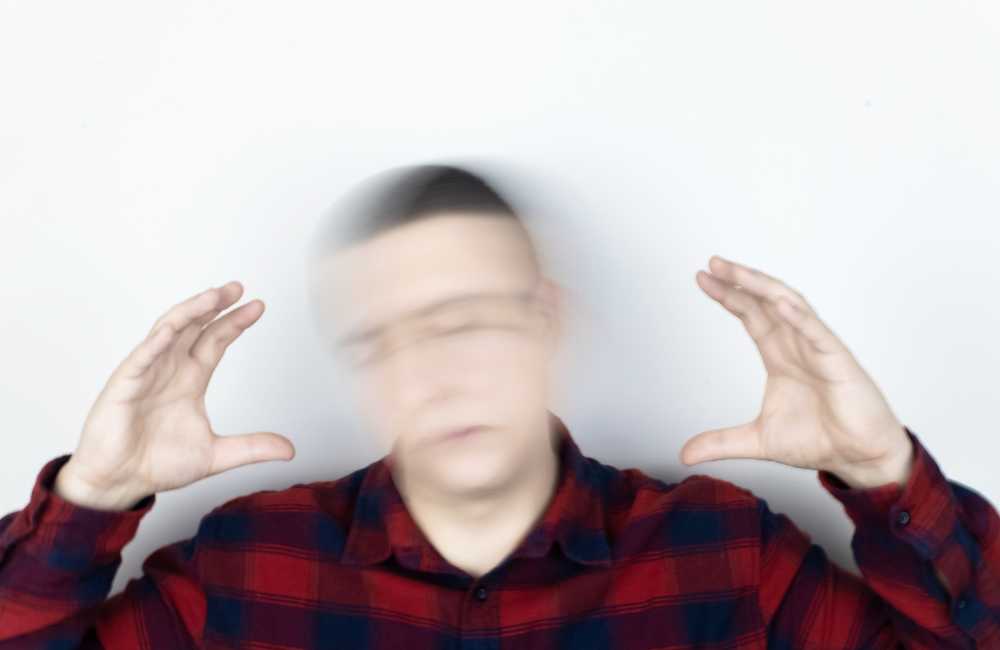Dizziness is an imprecise term commonly used by patients to describe 2 conditions viz: lightheadedness (faintness, giddiness) and Vertigo, a sensation of motion or spinning that is often described as dizziness.
Several conditions can cause dizziness because balance involves several parts of the body. The brain gets input about movement and the body’s position from the following:
- Inner ear.
- Eyes.
- Muscles.
- Joints.
- Skin.
Inner ear disorders are frequently the cause of feeling dizzy. The most common causes include benign paroxysmal positional vertigo (BPPV), Meniere’s syndrome and ear infections.
Many people use the terms “vertigo’ and “dizziness” interchangeably. Although these conditions create similar sensations, they are slightly different.
What is Dizziness?
Dizziness, therefore, is lightheadedness and Vertigo. Nausea and vomiting may accompany both sensations.
Types of Vertigo
-
Peripheral Dizziness
Peripheral vertigo is due to a problem in the part of the inner ear that controls balance. These areas are called the vestibular labyrinth, or semicircular canals. The problem may also involve the vestibular nerve (The nerve between the inner ear and the brain stem).
Peripheral vertigo may be caused by:
- Benign positional vertigo (also known as benign paroxysmal positional vertigo, BPPV)- is a condition where certain movements of your headset off a spinning sensation.
- Certain medicines such as aminoglycoside antibiotics, cisplatin, diuretics, or salicylates, which are toxic to the inner ear structures
- Head injury.
- Inflammation of the vestibular nerve (neuronitis)
- Irritation and swelling of the inner ear (Labyrinthitis)
- Meniere Disease
Patients with this disease have discrete attacks of vertigo of abrupt onset. The attacks last for several hours, not days, and are often accompanied by nausea and vomiting. The interval between attacks may be weeks to months. Between attacks, the patient is asymptomatic. Fluctuating hearing loss, typically accompanied by tinnitus and a feeling of pressure in the ear, is usually present during attacks. Irreversible hearing loss and chronic tinnitus may develop in the affected ear.
- Pressure on the vestibular nerve, usually from a non-cancerous tumour such as a meningioma or schwannoma.
-
Central Dizziness
Central vertigo is due to a problem in the brain, usually in the brain stem or the back part of the brain (cerebellum).
Central vertigo may be caused by:
- Blood vessel disease
- Certain medications, such as anticonvulsants, aspirin, and alcohol
- Multiple sclerosis.
- Seizures (rarely).
- Stroke.
- Tumours (cancerous or noncancerous).
- Vestibular migraine is a type of migraine headache.
Symptoms of Vertigo
The main symptom is a sensation that you or the room is moving or spinning. The spinning sensation may cause nausea and vomiting. Depending on the cause, other symptoms can include:
- Problem focusing the eyes
- Dizziness
- Hearing loss in one or both ears
- Loss of balance (may cause falls)
- Ringing in the ears.
- Nausea and vomiting, lead to loss of body fluids
- If you have vertigo due to problems in the brain (central vertigo), you may have other symptoms, including:
- Difficulty swallowing
- Double vision
- Eye movement problems
- Facial paralysis
- Slurred speech
- Weakness of the limbs
Causes of Lightheadedness
- Changes in BP due to posture.
- Dehydration.
- Low blood sugar levels.
- Anaemia.
- Some medicines.
- High levels of pain.
- Exposure to sights you find unpleasant, such as the sight of blood
- Anxiety.
- Standing up for long periods.
- Coughing, sneezing or laughing.
- Straining on the toilet.
- Heat exposure.

Investigating Vertigo and Lightheadedness
-
Vital signs
Temperature check for fever, Pulse oximetry
Pulse rate (rapid or irregular), and Blood pressure checks (supine and standing blood pressure (BP), noting any drop in BP on standing up (Orthostatic hypotension) and whether standing provokes symptoms.
-
Physical examination
-
- Check for the presence of nystagmus (involuntary eye movements) Dix-Hallpike manoeuvre assesses characteristic positional nystagmus.
Dix-Hallpike manoeuvre (aka Barany) is done by asking the patient to sit on a stretcher so that when lying back, the head extends beyond the end. With support, the patient is rapidly lowered to horizontal, and the head is extended back 45 degrees below horizontal and rotated 45 degrees to the left. The direction and duration of nystagmus and the development of vertigo are noted.
The patient is returned to an upright position and the manoeuvre is repeated with rotation to the right. Any position or manoeuvre that causes nystagmus should be repeated to see whether it fatigues.
-
- Audiometry/Ear examination
A bedside hearing test is done, the ear canal is inspected for discharge and foreign body, and the tympanic membrane is checked for signs of infection or perforation.
-
- Lack of coordination and balance
-
- The cerebellar function is tested by assessing gait and doing a finger-nose test
- Romberg test-which measures how well you keep your balance when standing with your eyes closed for 1 minute
- The Fukuda stepping test- marching in place with eyes closed, previously known as the Unterberger test may be done by specialists to help detect a unilateral vestibular lesion. The remainder of the neurologic examination is done, including testing the rest of the cranial nerves.
- Computerized dynamic posturography (CDP) test, where you try to maintain your balance while standing on a moving platform
- Rotary test, where goggles record your eye movements while you sit in a rotating, motorized chair
-
Lab investigations
-
- Complete blood count (CBC)
- Blood sugar levels.
- Pregnancy test.
- Thyroid function test (TFT).
-
Radiological investigations
-
- MRI
Magnetic resonance imaging with gadolinium enhancement is particularly useful in detecting acoustic neuroma,
and is the current gold standard test.
If not available, then a CT scan can be ordered.
Diagnosis
-
- History
- Physical examination
- Results of the investigation
Dizziness Treatment
Treatment for dizziness focuses on the underlying cause. In most cases, home remedies and medical treatments can help you manage the underlying cause.
The following are potential treatments for the causes of dizziness:
- Vertigo and benign positional vertigo (BPV)
BPV, a common cause of vertigo, can often be resolved using the Epley manoeuvre. This exercise involves turning your head in specific ways to help alleviate symptoms.
- Meniere’s disease
This condition has no cure, but it may improve with medications,
- Acoustic neuroma
If the tumour grows, radiation therapy or surgery may be needed.
- Dehydration
To help treat dehydration, drink plenty of fluids.
- Migraine
Treatment for migraine attacks (drugs and lifestyle modification) and learning to identify and avoid triggers.
- Inner ear issues
Inner ear issues can be treated with medications.
- Medications
If medications seem to be causing your dizziness, speak with a doctor about changing your medication or dose.
- A sudden drop in blood pressure
Treatment depends on the cause or underlying condition, but it may involve adjusting your medications, exercising, or changing positions slowly when standing up.
- Circulation problems
Circulation problems may improve with exercises a heart-healthy diet, medications, or surgery.
- Decrease in blood volume
Treatment for low blood volume focuses on restoring fluids through an intravenous (IV) line and treating underlying causes such as bleeding.
- Anaemia
Iron medications, and eating a balanced diet can help treat anaemia.
- Hypoglycemia
If you have symptoms of hypoglycemia, try drinking fruit juice or soda
- Carbon monoxide poisoning
This condition requires immediate medical care. It may be treated with oxygen and IV fluids.
- Multiple sclerosis (MS)
This condition currently has no cure, but physical therapy and medications may help with symptoms.
- Ear infection
An ear infection may get better with rest and drinking fluids, or it may be treated with antibiotics
- Labyrinthitis and vestibular neuritis
Treatment often includes medications such as anti-dizziness medications, antihistamines, and antibiotics.
Conclusion
Experiencing an episode of sudden or severe dizziness can be alarming but most cases of dizziness clear up on their own once the underlying cause is treated. In rare cases, dizziness can be a symptom of a more serious health problem. Please consult your healthcare provider if dizziness becomes severe and recurrent.

